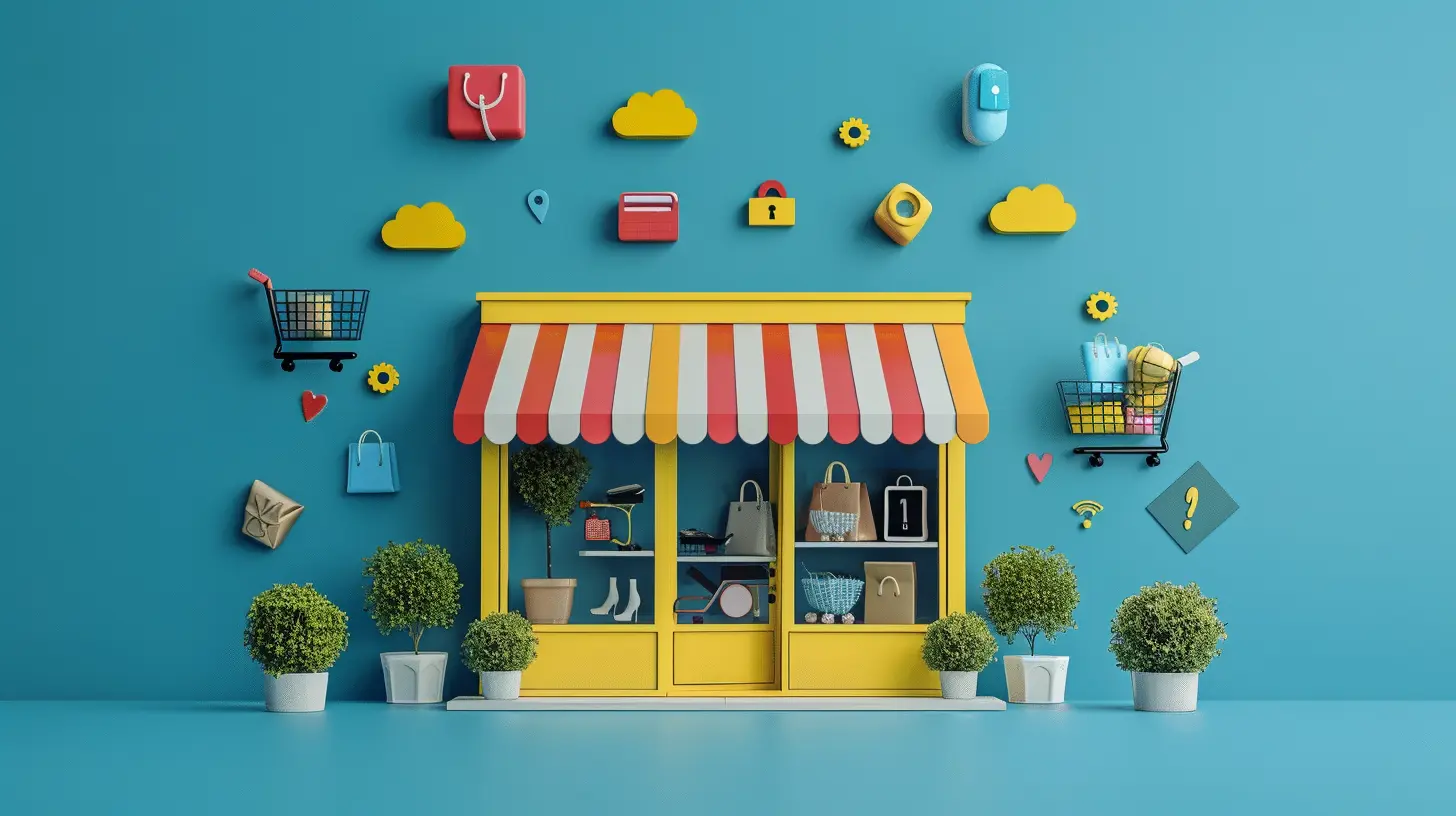14 April 2025
Let’s have a heart-to-heart, shall we? The retail landscape has gone through some serious changes over the past few years. The days when customers walked into a store with nothing but window displays to guide them are long gone. Now, it's all about blending online and offline experiences to create something seamless, something memorable—a true omnichannel experience.
If you're thinking, "Omnichannel sounds fancy, but do I really need to worry about it?" Let me tell you: yes, you do. Omnichannel isn’t just a buzzword. It’s a game changer. Customers today expect businesses to meet them where they are—whether that’s scrolling on their smartphone at 10 PM, browsing in-store on a Sunday, or chatting with a chatbot while sipping their morning coffee.
So, how can businesses master omnichannel retail? Let’s roll up our sleeves and break it all down.
What Is Omnichannel Retail?
First off, let’s demystify the term. Omnichannel retail means connecting with your customers across multiple channels (like websites, apps, physical stores, social media, etc.) and providing a seamless experience as they hop between them. Think of it as weaving a giant web where every touchpoint is connected and consistent.For example, ever browsed a product on a website, later seen an ad for it on Instagram, and ended up picking it up in-store? That’s omnichannel retail in action—smooth and effortless.
But here’s the catch—it’s not just about being present on different platforms. It’s about integrating those platforms so well that the experience feels unified. Your customer doesn’t care if they’re on your app or in your shop; they want the same level of awesomeness everywhere.
Why Omnichannel Retail Matters (A Lot!)
Seriously, why should you care? Let’s break this down.1. Customer Behavior Has Shifted
People shop differently now. They use their phones to compare prices while standing in your store, check reviews online before clicking "add to cart," and expect lightning-fast delivery. Customers are in the driver’s seat, and they’re steering toward businesses that make life easier for them.
2. It Boosts Sales Across Channels
Here’s the juicy part: Customers who shop across multiple channels spend more. Studies show omnichannel shoppers have a 30% higher lifetime value compared to those sticking to one channel. If you’re not meeting them across channels, you’re leaving money on the table. Plain and simple.
3. It Builds Brand Loyalty
Let’s be honest—today’s shoppers aren’t forgiving. If your online store isn’t mobile-friendly or your in-store team doesn’t know about your online promotions, people notice. And they won’t stick around. Omnichannel retail isn’t just about sales; it’s about trust, convenience, and nurturing loyalty.
The Essentials of Building an Omnichannel Strategy
Okay, now that we’re all on the same page about why omnichannel retail is important, let’s talk about the “how.” Crafting a killer omnichannel strategy doesn’t happen overnight, but it’s doable if you cover the basics. Here are the steps every business should focus on:1. Understand Your Customers (Seriously, Know Them)
The first step in mastering anything is understanding who you’re working for—your customers. Dig into their habits. Are they glued to their smartphones? Do they prefer shopping at midnight? What social media platforms are they on? Use things like surveys, website analytics, and social listening tools to gather this info.Once you know them, you can design touchpoints that fit their lifestyle like a glove. Think of it like planning a surprise party—you’ve got to know what they love to pull it off.
2. Unify Your Channels
This is the heart of omnichannel retail. Your physical stores, e-commerce platform, mobile app, social media accounts, and customer service need to be synced. Picture a symphony orchestra: every instrument plays a different role, but they all come together to make beautiful music.For example, your in-store team should know if a customer added something to their cart online, so they can assist when the customer walks in. Use tools like Customer Relationship Management (CRM) software to track interactions and create a consistent experience.
3. Prioritize Mobile (No, Really, PRIORITIZE It)
If your website isn’t mobile-friendly yet, we need to talk. Smartphones are basically an extension of people’s hands now. Around 59% of e-commerce purchases happen on mobile devices, and that number’s climbing fast. Whether it’s a mobile app or just a responsive website, ensure your mobile experience is smooth as butter.4. Offer In-Store Tech Perks
Even brick-and-mortar stores need a tech upgrade to stay relevant. Consider offering features like:- Click-and-Collect: Let customers buy online and pick up in-store.
- In-Store Tablets/Kiosks: If your stock runs out, let customers browse and order online from your store.
- Contactless Payment Options: Because nobody likes fiddling with cash or cards anymore.
Blending the online and offline worlds not only helps your customers but also keeps them coming back.
5. Use Data for Personalization
Who doesn’t love feeling like a VIP? Personalization is key when it comes to omnichannel. Use data to send customized emails, recommend products, or even greet returning customers by name on your website. When people feel seen and valued, they stick around.6. Customer Support Needs to Be Seamless
What happens if a customer starts a conversation with your bot on Instagram but follows up via email? Or calls in about an online issue? Your support team should have a unified view of the customer’s history, so they’re not starting from scratch each time. Tools like help desks with omnichannel ticketing systems can save you here. Basically, make it so easy for your customers to get help that they don’t even think about it.
Challenges You’ll Face (And How to Tackle Them)
Not gonna sugarcoat it—omnichannel retail isn’t all rainbows and unicorns. It comes with challenges. Let’s tackle a couple of the big ones:1. Integration Struggles
Syncing all your platforms, tools, and data can feel like herding cats. It’s overwhelming, but the key is to invest in the right technology. Platforms like Shopify, HubSpot, and Salesforce have options for omnichannel integration that make things easier.2. Data Overload
You’ll be swimming in data from various touchpoints—website clicks, social media interactions, in-store purchases, and more. The trick? Don’t try to analyze everything at once. Focus on the metrics that matter most for your goals, whether that’s customer retention, conversion rates, or average order value.3. Human Factor
Even with all the tech in the world, your staff still plays a critical role. Make sure your team is trained not just in the tools and systems but in delivering consistent customer service across platforms.The Future of Omnichannel Retail
So, what’s next? Technology is evolving fast, and so is the way people shop. Artificial intelligence (AI) and augmented reality (AR) are making shopping experiences more personalized and immersive. Imagine letting a customer "try on" clothes virtually or using AI to recommend products based on their past behavior. These trends are going to take omnichannel retail to the next level.And let’s not forget sustainability. Consumers are becoming more eco-conscious, so businesses that weave sustainability into their omnichannel strategies—like offering digital receipts or promoting eco-friendly products—will stand out.
Wrapping It All Up
At its core, omnichannel retail is about making your customer’s experience as smooth and enjoyable as possible. It’s about showing up everywhere they expect you to be and delivering consistently, whether that’s on their couch, at your store, or somewhere in between.If you want to survive and thrive in today’s retail world, mastering omnichannel isn’t optional—it’s essential. While it might feel daunting, taking the time to understand your audience, unify your channels, and personalize your approach will pay off big time. And remember: it’s not about being perfect; it’s about being better every day.
So, what’s stopping you from diving into omnichannel retail? Your customers are waiting (and probably scrolling through their phones right now).




Xena Murphy
Unlock the secrets of seamless shopping experiences. As omnichannel retail evolves, discover the hidden strategies that can elevate your business from ordinary to extraordinary—dare to explore the unknown paths of consumer engagement.
April 16, 2025 at 8:25 PM